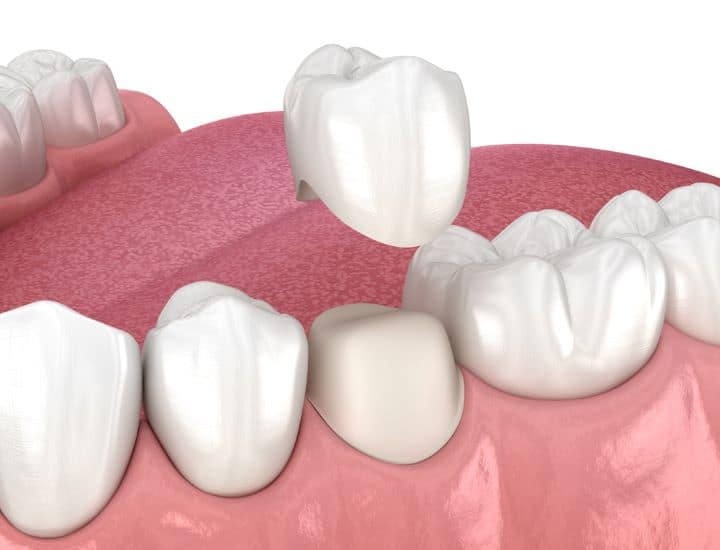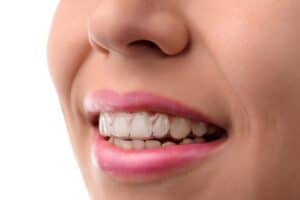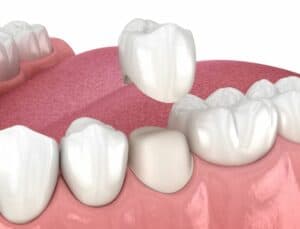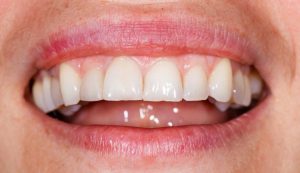You may have used toothpaste in paste form daily. However, toothpaste exists in numerous types of formulations and is dispensed in paste, gel, or even powder form.
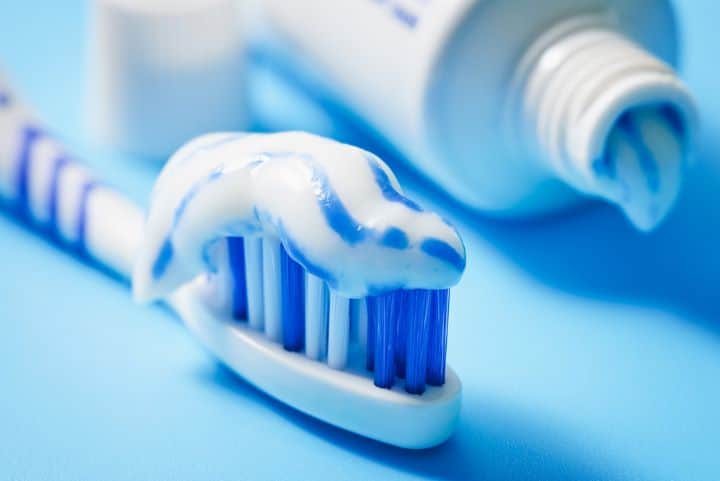
Toothpaste is used for cleaning your teeth and keeping those gums, tongue, and other oral structures healthy. You squeeze some onto your toothbrush, brush it on your teeth, and spit out the excess. Don’t rinse!
But how does toothpaste protect your teeth and oral health? Toothpaste has specially formulated ingredients that serve their unique purpose.
There are several different types of toothpaste available that suit your individual oral health needs.
Let’s learn about toothpaste, its ingredients, how it was developed, its benefits, types, and tips to use it for a healthier and brighter smile.
Main Ingredients in Toothpaste
The main ingredients in most toothpaste are abrasives, fluoride, and detergents. There are 5 ingredients most widely added in toothpaste formulations. These are:
Fluoride
Fluoride strengthens your tooth enamel and prevents cavities by making it more resilient to acid attacks. When buying fluoride toothpaste, make sure to notice the three active ingredients, sodium fluoride, sodium monofluorophosphate, and stannous fluoride.
You should only use fluoride toothpaste containing these active ingredients as they are the ones recognized by the Food And Drug Administration For Cavity Prevention. Toothpaste formulations for adults may contain as little as 0.15% fluoride in its active form.
For toddlers and children, it is best to seek advice from the dentist as the requirement might vary depending upon their teeth health and age.
Detergents (Sodium Lauryl Sulfate)
You must have noticed this name in the ingredient list of shampoos and soaps. This same detergent i.e. sodium lauryl sulfate is also used in toothpaste. The function of this detergent in toothpaste is to create foam, help ingredients come in contact with your teeth, and eventually enable an effective oral clean.
Abrasives
Abrasives like calcium carbonate help in the physical exfoliation of bigger food particles and therefore allow the active ingredients to come in contact with teeth and gums.
This is the reason, your teeth feel smooth after good and effective tooth brushing. In addition, abrasives remove extrinsic stains like that of coffee, tea, and colored drinks thereby leaving a whiter, brighter smile.
There may also be other abrasives like dehydrated silica, magnesium carbonate, hydrated aluminum oxides, phosphate salts, and silicates.
All these abrasives added in toothpaste remove food particles but at the same time are gentle to the enamel.
Harsh abrasives can damage or even erode the enamel, leaving your tooth susceptible to bacteria and sensitivity. This is why it is so important to choose a toothpaste that is clinically tested and recommended by certified dentists.
Glycerol
Glycerol is a humectant added in several types of consumables, even edible food to keep them moist and prevent drying up. It is also added in toothpaste to serve the same purpose i.e. protect the paste against drying up, help glide it smoothly from the tube, and keep its texture consistent.
Sorbitol
Sorbitol is a sweetening agent that binds the toothpaste ingredients together.
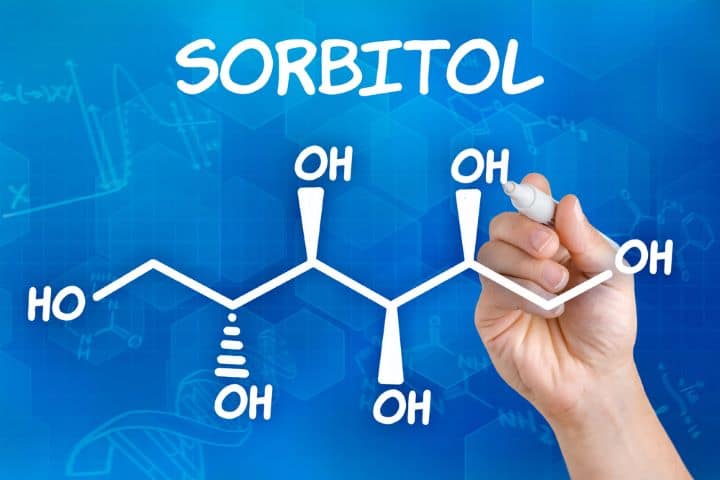
Though it is a sugar, sorbitol does not cause cavities like regular sugar and is also used as a sugar alternative by people with diabetes.
Other common ingredients in toothpaste are flavors, and whitening agents which help remove stains on your teeth. Toothpaste makes the brushing action more effective at removing food particles and bacteria. It strengthens your teeth and protects your gums compared to brushing alone.
History of Toothpaste
Toothpaste has been developed only recently. How did people in the past take care of their oral health?
In the past, humans used to wipe their teeth with substances like salt, ox bile, ashes, and chewed tree bark. These were used to clean plaque and freshen breath. For plaque removal, people made gritty pastes from ingredients like crushed eggshells, lemon juice, vinegar, and brick dust.
While some pastes were too harsh on teeth and gums, they worked to remove stuck-on food and bacteria. That’s how people of the past took care of their oral health until the development of toothpaste that offered better and safer oral cleanliness.
When was modern toothpaste first developed?
In the 1830s, the first commercial toothpaste was developed using milder ingredients such as salt, crushed soapstone, and mint or wintergreen oil. These early toothpaste were formulated once an understanding was established about the harsh effects of historically used ingredients on the enamel.
How did toothpaste become popularized and commercialized?
Then in 1885, the first toothpaste was developed and dispensed in a collapsible tube making it much more convenient to carry and encouraging daily use. Toothpaste popularity increased in the 1890s as dentists began recommending tubes for home use and advertising campaigns commenced.
The major increase in the use of toothpaste occurred after the discovery and addition of fluoride as an effective salt in preventing tooth decay.
Why Toothpaste Is Important
Toothpaste plays a key role in cleaning food debris, preventing cavities, and leaving your breath fresh and desirable. Some ways that toothpaste helps you keep a healthy smile:
Removes Plaque and Tartar
Toothpaste is formulated to scrub away plaque, the sticky film that constantly forms on your teeth.
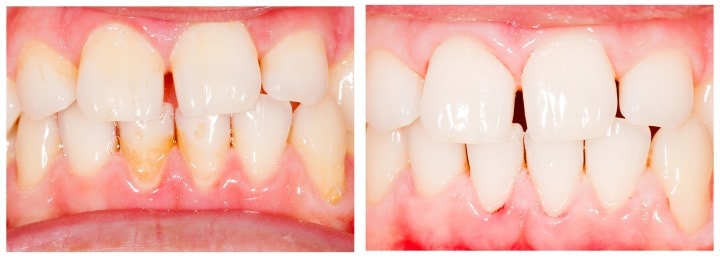
Without daily removal using toothpaste, plaque minerals harden into tartar that brushing alone cannot eliminate.
When you brush with toothpaste twice daily, it helps keep plaque from building up and therefore prevent any consequences such as tooth decay and gum recession.
Prevents Cavities and Tooth Decay
Toothpaste has ingredients like fluoride that protect teeth from acids produced due to the fermentation of food particles by bacteria. Acids released by food fermentation cause tooth decay and eventually cavities.
It is therefore important to brush at least half an hour after meals with toothpaste as this aids in washing away food debris and preventing tooth decay. This is how brushing daily with toothpaste protects your teeth and gums against cavities and gum disease long-term.
Brightens Teeth and Freshens Breath
Toothpaste with its abrasive action and added whitening agents helps break down stains that build over time. It also leads to fresh breath by disrupting bacteria that cause bad breath by killing them.
Different Types of Toothpaste
There are several different types of toothpaste available but the most commonly used are:
Fluoride Toothpaste
Fluoride is the most important ingredient in toothpaste. It strengthens your enamel and protects against tooth decay.
How does Fluoride protect against tooth decay?
Fluoride strengthens the structure of tooth enamel by incorporating itself into the hydroxyapatite crystals that make up the enamel. This helps tooth enamel become more resistant to acids. Where do you think these acids come from?
From your food! When left for long periods, food particles, especially sugary foods are consumed by mouth bacteria. Acids released by this fermentation process demineralize the enamel. Though the enamel remineralizes again, continued exposure to acids can dissolve minerals from tooth enamel as time progresses and therefore lead to cavity and sensitivity.
The fluoride attaches itself to the hydroxyapatite crystals in tooth enamel and makes it more acid-resistant. If demineralization does start to occur, fluoride allows remineralization to take place more easily as well.
In addition to fluoride, the saliva also has calcium, phosphate, and fluoride ions that can replace the minerals lost to acid attacks, making the enamel harder and stronger.
Some recommended fluoride toothpastes are Colgate, Crest, Sensodyne, or Closeup, all of which strengthen enamel over time.
Whitening Toothpaste
We all want a whiter, brighter smile. This can be achieved by the use of whitening toothpaste.

These whitening toothpastes gently exfoliate surface stains caused by coffee, tea smoking, or any other extrinsic factors to remove surface stains. Some contain baking soda or hydrogen peroxide to lift stains away. To whiten teeth, try Crest 3D White for its cutting-edge formula, Colgate Optic White for whitening power, and Sensodyne Pronamel for those with sensitivity.
Sensitivity Toothpaste
Have you ever experienced that sharp electrifying pain while eating or drinking something cold or hot? It may be that you are having tooth sensitivity. There are sensitivity toothpastes available that block the pathways causing sensitivity. One of the ingredients potassium nitrate added in sensitivity toothpaste functions as a sensitivity pathway blocker.
If you are experiencing tooth sensitivity, you can use Sensodyne Pronamel, Colgate Sensitive Pro-Relief, or Tom’s of Maine Sensitive.
All of these provide soothing relief so you can enjoy your favorite foods and drinks if you have sensitive teeth. However, if sensitivity persists for a long time, it is best to consult your dentist for an underlying dental issue.
Natural Toothpaste
Some of us love natural alternatives to everything as these are readily available and often cheap compared to specially formulated toothpaste. In addition, natural toothpastes are free of artificial additives and dyes.
Some also feature herbal extracts with anti-microbial effects i.e. they provide protection against tooth decay-causing bacteria. Well-known natural toothpaste brands meeting strict standards are Tom’s of Maine, Nature’s Smile, and Hello Oral Care.
How to Use Toothpaste Correctly
Use a pea-sized amount of toothpaste on your toothbrush. Only a small amount is needed for effective cleaning and fluoride benefits.
Brush for 2 minutes, twice a day. Take your time to clean all tooth surfaces properly morning and night.
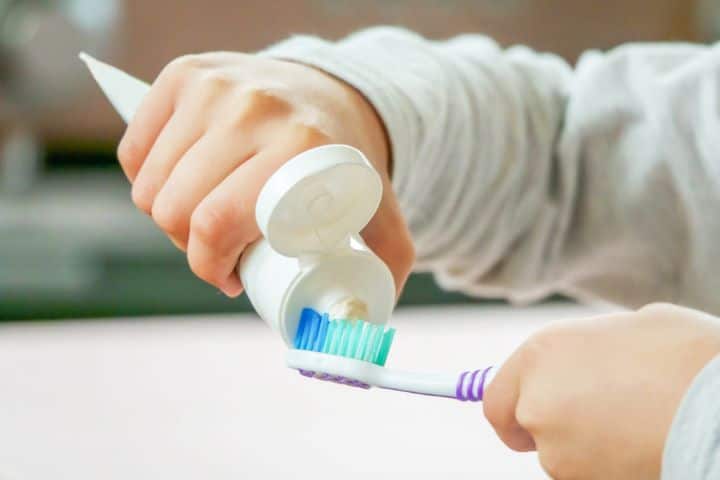
Brush all tooth surfaces, including chewing surfaces, tongue sides, and backs for complete removal of plaque and bacteria.
Do not rinse after brushing, only spit out the excess. This is done to let the active ingredients in toothpaste do their magic.
Tips for Choosing the Best Toothpaste
Consult Your Dentist
It is important to consult your dentist before choosing a toothpaste for your specific needs. This is necessary because your dentist knows your complete oral health history and will recommend the best toothpaste suiting your condition and your oral health state.
Read Ingredients Labels Carefully
Ingredients lists on toothpaste tubes provide valuable information. When buying a toothpaste, look for a clinically certified brand and whether it contains fluoride as this protects against cavities. If your dentist has recommended some specific toothpaste with concerns like whitening, fresh breath, or gum disease, buy just that.
Look for the American Dental Association Seal of Acceptance
Toothpaste earning the ADA Seal has been tested and proven safe and effective through clinical trials. The ADA only grants this seal if a toothpaste meets high standards of ingredient quality and performance testing. Check tube labels feature this seal of acceptance for the gold standard in toothpaste.
Summary
Toothpaste is available in paste, gel, and powder form.
Toothpaste removes plaque buildup, protects teeth from cavities, and reduces sensitivity.
When choosing toothpaste, consider your mouth’s health, dentist advice, and ingredients
Using the right toothpaste along with brushing properly twice a day helps give you a healthy smile.
FAQs (Frequently Asked Questions)
When to replace toothpaste?
You should replace your toothpaste every 3 to 6 months. This is recommended because the tubes can become contaminated after a while. If you notice any toothpaste that does not smoothly squeeze out of the tube, discard it.
When does toothpaste expire?
Toothpaste manufacturers design their products to remain effective for up to two years from when you first open the tube. Do not use expired toothpaste as the active ingredients will no longer be effective in doing their job and your oral hygiene may suffer.
What’s the difference between toothpaste and toothpowder?
Toothpowder uses abrasives like chalk or silica, while modern toothpaste contains ingredients like fluoride and detergents for added effectiveness.

Both can clean teeth, but toothpaste provides extra anti-cavity and protection benefits when used as directed.
Can children use the same toothpaste as adults?
Most children can use regular fluoride toothpaste in small amounts from age 2. Ask your child’s dentist for specific advice based on their needs and ability to spit versus swallow when brushing.
Is it OK to eat toothpaste accidentally?
Accidentally swallowing a small amount of toothpaste is not harmful for adults. However, children under 6 should be monitored when brushing as they can swallow toothpaste in larger amounts.
Should you rinse after brushing?
No. You do not need to rinse after brushing, only spit out the excess.

